
About / Theme
The Audi Innovation Award is a competition for design research and the highlighting of innovative ideas. The competition, led by Audi Middle East, aims to empower regional designers while archiving intellectual progress in the region.
When designing objects that enhance our lifestyles, designers globally are being summoned to reduce, reuse or recycle. Designing circularly means pushing ahead of the competition, by creating objects that combine all three to enhance our quality of life now, and in the future. From the brand that is consistently raising global benchmarks, the Audi Innovation Award invites designers living across the Middle East to submit design objects that are designed with circularity in mind, to lead the world into a sustainable industrial revolution.
A circular economy is the thoughtful and restorative process by which the materials and resources that make up a design are in use for as long as possible, whereby we extract the maximum value from them whilst in use, and recover and regenerate materials at the end of each product life, closing the circle. Submissions can be revisions of existing products in the market with improvements made to one or all aspects of its lifecycle, or an entirely new product considering circularity. No innovation in the design process is too small to make a large impact.
Winners for 2020.
1st place: Insect Kids.
Insect Kids, created by Ahmad Jarrar and Rasha Jarrar, aims to redefine traditional playtime by creating a range of flatpack toys made out of recyclable and biodegradable materials. Studies suggest that children get bored of toys in an average of 36 days, ultimately cluttering homes or loading landfills. The toys redesigned by Insect can be easily disassembled, reducing clutter and ensuring space efficiency. The innovators also provide recycling services for responsible disposal at the end of the product’s lifecycle.
The Audi Innovation Award 2020 runner ups.
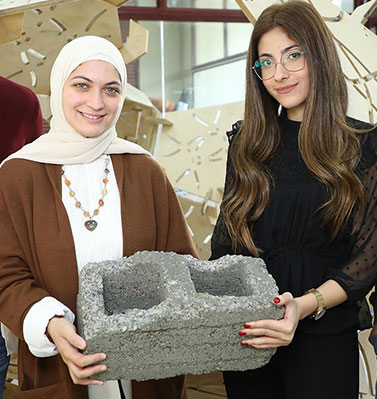
2nd
Infrastic:
Iman Badawi Najjar, Louay Ghezzawi, Jana Shami, and Haidar Elmkdad
Infrastic aims to reduce waste by introducing waste plastic as a main component in infrastructural services.

3rd
Teknova:
Ali Khaled Bin Zayed
Teknova aims to leverage an Internet of Things (IoT) based patented ‘fatigue sensor’ to measure the wear and tear of metal ware, while remotely tracking the remaining useful life of structural materials.
Previous Winners - 2019
The Audi Innovation Award theme for 2019 was Simplification
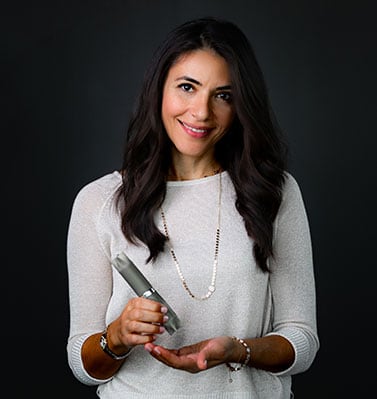
1st
Pincher:
Twelve Degrees
Pincher, the physical interpretation of the cooking phrase, "a pinch of salt".
Read more >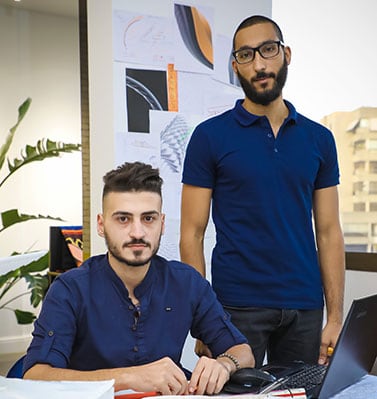
2nd
BENTOS:
Ahmad Alameh & Hadi Nassar
Bentos is a super polymer using nanotechnology to hold heavy weight objects.
Read more >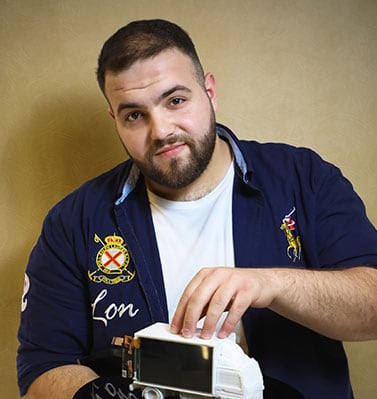
3rd
Previous Winners - 2018
The Audi Innovation Award theme for 2018 was Connections
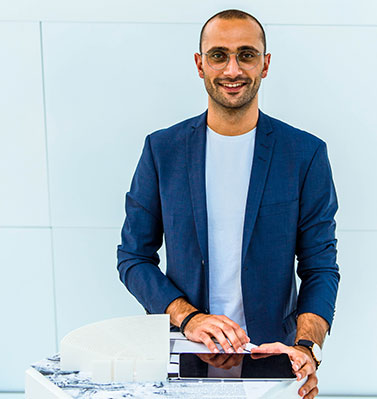
1st
R2R:
Elias El Soueidi
Ruin to Reality (R2R) is an application that would allow access to virtual 3d models of historical buildings and cultural sites.
Read more >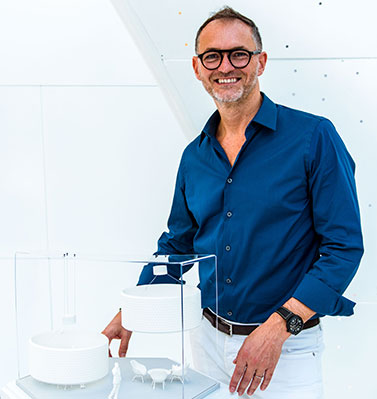
2nd
CyRCLE:
Andrea Sensoli
CyRCLE is proposed as a modern-day shelter and provides an enhanced means of communication.
Read more >
3rd
Connect to Thrive:
Abdhul Hazeeb HZB
Connect to Thrive is an enclosed interior space proposed as place of solitude and calm.
Read more >Previous Winners - 2017
The Audi Innovation Award theme for 2017 was Autonomy

1st
EZ move:
Jamal Alsharkas
EZ move is the first innovation of its kind to finally give mobility and visually impaired people freedom of movement and the dignity of being in control of their own destination.
Read more >
2nd
iLuminating Light:
Benjamin Piper
iLuminating Space’ is a digital light projection system that augments physical spaces with intelligent lighting and digital content / information.
Read more >
3rd
Monumental Shadow:
Ricardas Blazukas
Monumental Shadow: an autonomous design that blends function, aesthetics and integrity of design to create a high quality social space representing modern day living.
Read more >Judges For 2020
Led by Hani Asfour
Hani Asfour is the dean of the Dubai Institute of Design and Innovation (DIDI). An MIT and Harvard-trained architect with over 22 years of experience, he was also the Founding President of the Beirut Creative Cluster and Founding Partner of Polypod, an award-winning multidisciplinary design studio in Beirut, Lebanon. He was recently named one of the 45 most influential architects in MENA by Middle East Architect Magazine. Hani plays a key role in leading the judging panel discussions during the voting process and steering the design debate with his valuable experience and input.
Cyril Zammit
Cyril Zammit started his career at the Institut Français in Prague. After working as Sponsorship Manager for the Montreux Jazz Festival, he joined UBS and then HSBC Private Bank in Switzerland for which he signed a 5-year partnership with Design Miami. In 2012, Cyril Zammit launched Design Days Dubai, a fair entirely dedicated to collectible and limited-edition design – the first of its kind in the Middle East and South Asia. In 2015, he participated to the launch of Dubai Design Week giving this new event a distinctive identity. Since February 2017, Cyril Zammit has established himself as an independent design advisor and consultant. Between 2017 and 2019, he was working with Dubai Culture & Arts Authority as expert before joining another UAE government entity.
Carsten Bender
With over 18 years’ experience with Audi AG, Carsten joins Audi Middle East as the Managing Director in the Middle East region. His career with the Four Rings has included achievements in the field as Sales Manager for Australia, New Zealand, Japan and as the Sales Director for both Eastern and Western European regions. He returns to the Middle East, where he held the position of Audi Middle East Sales Director from 2009-2011, to lead the Audi brand in the region where he will directly head the Audi business across 11 Middle East countries.
Dr. Carlos Montana
Dr. Carlos Montana is an award-winning designer and educator. He is currently a Founding Associate Professor of the Dubai Institute of Design and Innovation DIDI, the first interdisciplinary design university in Dubai, established in collaboration with MIT and Parsons. As a professional designer he has worked with numerous companies designing furniture, lighting, ceramic products, electric appliances, exhibitions, jewellery and graphics, among others.
Amer Aldour
Amer is formally trained in Architecture and Engineering. He currently holds a role at the Expo 2020 Dubai Site Delivery Department; overlooking the International Pavilions’ design and exhibit integration within the Expo masterplan. Amer has also special interest in interactive design; exploring the notion of physical computing and the interface between technology and architectural space. He has his own interactive design studio in Dubai (inter.act design). The studio creates experiential installations that intersect the worlds of architecture, art and programming. His works were shown at a number of international exhibitions including Salone del Mobile at the Superstudio in Milan, Istanbul Design Week and Design Days Dubai.
Hamza Omari
Hamza Al-Omari is a Jordanian-Canadian product designer. Al-Omari’s work has been exhibited in Dubai, Sharjah, Jordan, Vancouver and London. Al-Omari’s designs creatively marry innovation with function, pushing the boundaries of what is possible whilst responding to the context of the product. Through a process of questioning and scrutiny towards every stage of design, each project is dealt with within the constraints it requires. Omari believes that good design maximizes function with form, encompassing both social and environmental integrity.
Mark Stobbs
Mark Stobbs is the Director or Programming and Outreach at Dubai Design District. He has been instrumental in the development of d3 since its inception having been with the project almost since its launch. In his role, Mark has developed and overseen international projects which have seen designers from the region promoted on global design stages, and is now principally directing industry focused programming in the district. Prior to this, Mark led the Marketing and PR efforts for the inaugural Downtown Design in 2013, and before that held the title of Publisher at leading Arab culture magazine Brownbook. He spent 7 years at Wallpaper* magazine in London leading the creative solutions team on various international brand projects prior to coming to Dubai.
Frequently Asked Questions
1. Where can I submit my idea?
To successfully submit, the applicant must:
- Follow the steps, upload a presentation and click submit
- Upon successful submission, the applicant will receive an email confirmation
2. What countries are contestants allowed to participate from?
In order to participate in the competition applicants may be of any nationality but must be residents of:
Bahrain, Jordan, Kuwait, Lebanon, Oman, Palestine, Qatar, Saudi Arabia, Syria, and the UAE.
3. What is the submission deadline?
The tentative submission deadline is the 4th of October 2020. Please keep an eye on the website and social media channels as they are regularly updated with important dates/timelines.
4. Do I have to submit a working prototype or only the concept/Idea?
The submission can be a concept or an idea but projects that have been carefully considered, or have been developed and mapped out are more likely to be selected by the jury.
5. Is there a design brief for the competition? If so, where can I find it?
The theme of the competition can be found by scrolling to the second page of ‘THEME’, further information can be found in CRITERIA and the application itself acts as support to guide the applicant.
6. Is there any participation fee to enter the competition?
The objectives of the Audi Innovation Award is to support emerging talent and promote innovation in the region, therefore there is no participation fee to enter the competition.
7. Does the submission have to be in relevance or direct correlation to the operational business of Audi itself?
No, the submission does not have to be in any relation to Audi or the automotive industry.
8. Kindly send me detailed information about the intellectual property rights and whether they belong to the applicant.
The competition is dedicated to empowering regional designers, Audi does not seek ownership of any of the submissions or developed winning projects. The IP remains in the name of the creator/designer.
9. As the registration requires personal information such as nationality and the like, how do we fill the personal information fields if we are participating as a group or company? What is the maximum size of a team allowed?
Applicants may submit as a group, studio or office by selecting one point of contact; this point of contact must be a resident in one of the listed countries. Please note only one person will be invited to present the idea at award ceremonies and presentations if the group does not reside in the UAE.
10. Can I participate with an innovative idea that is difficult to realize in the present?
Yes, allow room for the judges to make that call.
11. I have a great idea but it is not linked with the year’s theme, can I still submit it?
Yes, the competition is open to all submissions however one of the criteria for judging is the relevance to the theme.
(See Theme/Criteria section on the home page)
EZ move

EZ move: Jamal Alsharkas
EZ move is the first innovation of its kind to finally give mobility and visually impaired people freedom of movement, freedom of choice and the dignity of being in control of their own destination. This intelligent mobility device senses obstacles in the user’s path, enabling anyone to walk & travel independently far outside their comfort zones and to discover the amazing roots that our city offers.
 With 9 years of work experience, Jamal is a proficient and imaginative creative event designer. He holds a degree in Product design and has had the chance to teach for 2 years at the Arab International University in Syria where he was responsible for teaching basic design skills and guiding first year students.
With 9 years of work experience, Jamal is a proficient and imaginative creative event designer. He holds a degree in Product design and has had the chance to teach for 2 years at the Arab International University in Syria where he was responsible for teaching basic design skills and guiding first year students.
He moved to Dubai in 2013 and with his background in product and interior design, and joint passion, he was able to enter the events business where since then, he has focused for 4 years on space design and interactive solutions for countless events.


iLuminating Light

iLuminating Light: Benjamin Piper
‘iLuminating Space’ is a digital light projection system that augments physical spaces with intelligent lighting and digital content / information.
The system is intended to utilize interactive lighting systems as a means to both capture and relay information in physical environments.
 The device consists of 3d motion-sensing camera to capture information from the real world such as the position of a user’s hands, location and identity of real-world objects and the geometry of a given physical space.
The device consists of 3d motion-sensing camera to capture information from the real world such as the position of a user’s hands, location and identity of real-world objects and the geometry of a given physical space.
The digital content is projected back into the physical through ‘low-level’ emotive information or ‘high-level’ literal information content such as text, graphics, imagery and video content: combining digital and physical worlds in a single human-computer interface.
Monumental Shadow

Monumental Shadow: Ricardas Blazukas
Monumental Shadow is a kinetic shelter concept that adapts to the position of the Sun to cast the most optimal shadow throughout the day.
The vertical totems equipped with sun tracking system pivot in response to location of the Sun. By creating comfort and encouraging people to collect around a focal point, the totems activate new gathering and social spaces in the city.
 Most shading devices within built environment are static, whilst the Sun position is constantly changing. My starting point was to create a design that responds to the harsh climate of the Middle East, is spatial, contains artistic creativity, but also has a social aspect of giving back to the community. Monumental Shadow became a combination of all: an autonomous design that blends function, aesthetics and integrity of design to create a high quality social space representing modern day living.
Most shading devices within built environment are static, whilst the Sun position is constantly changing. My starting point was to create a design that responds to the harsh climate of the Middle East, is spatial, contains artistic creativity, but also has a social aspect of giving back to the community. Monumental Shadow became a combination of all: an autonomous design that blends function, aesthetics and integrity of design to create a high quality social space representing modern day living.


R2R
R2R: Elias El Soueidi
Ruin to Reality (R2R) is an application that would allow access to virtual 3d models of historical buildings and cultural sites.

The application’s intention is to take part in the archiving process of different cultures by preserving their architectural heritage. the dignity of being in control of their own destination.

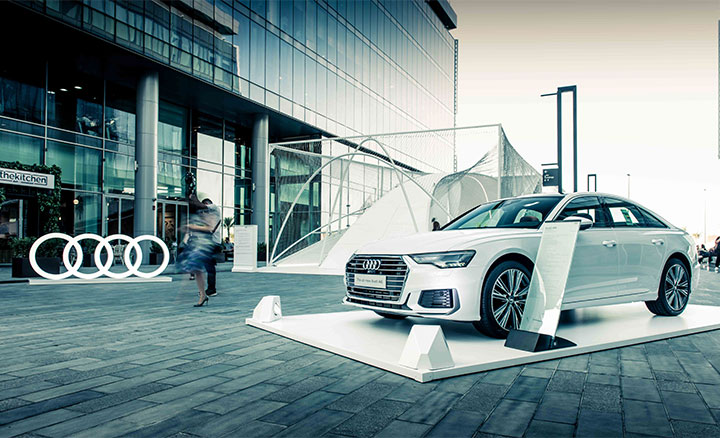

Connect to Thrive:
Connect to Thrive: Abdhul Hazeeb HZB
Connect to Thrive is an enclosed interior space proposed as place of solitude and calm; neither your home nor your workplace, but a space in between for use just for a certain amount of time: An urban design concept where humans can connect within the compacted life of living in cities.
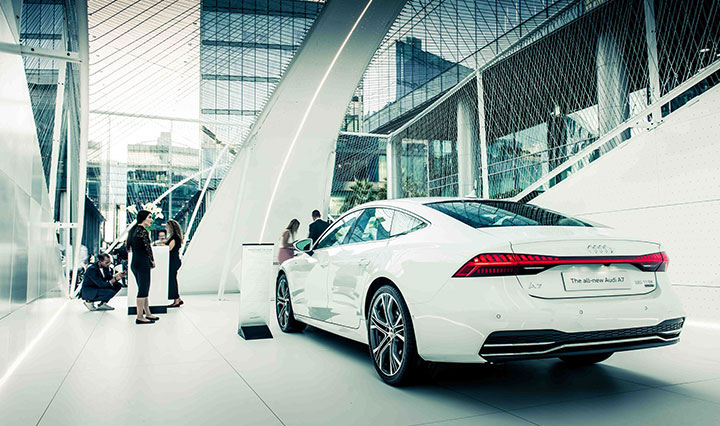
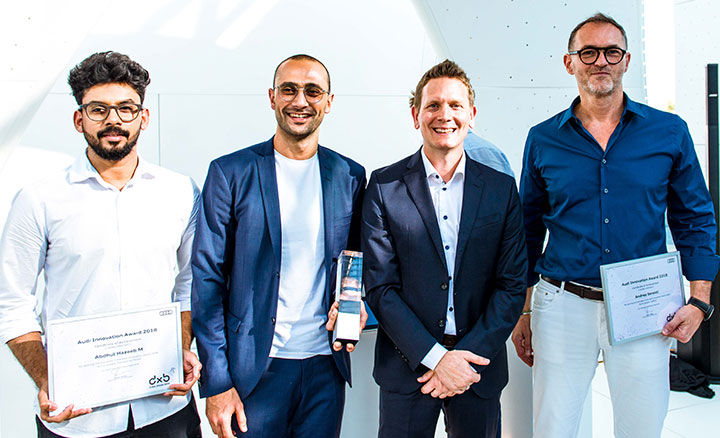
CyRCLE:
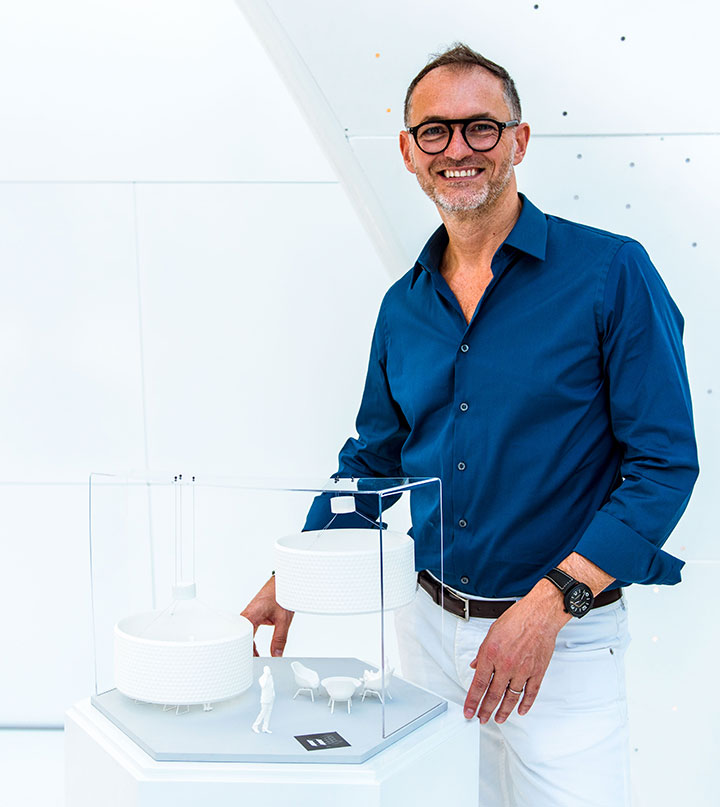
CyRCLE: Andrea Sensoli
CyRCLE is proposed as a modern-day shelter and provides an enhanced means of communication: exploding the notion of modern fixation with screens by providing a 360-degree communal display space for meetings, gatherings or entertainment.
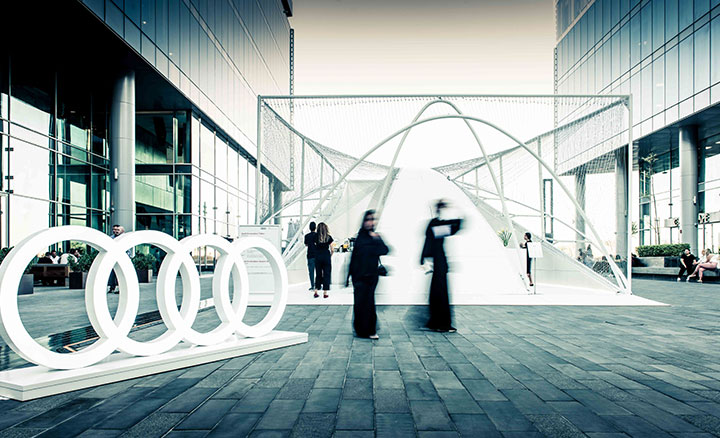
Pincher
Pincher: Twelve Degrees Design Agency
The inspiration behind ‘Pincher’ came through realizing a product from the phrase, "a pinch of salt". Rather than shaking salt and pepper randomly out of a dispenser, the lightweight silicon device allows the user to measure precisely the amount that would be released from between your own fingertips through the motion of pinching. This allows the user to control the flow of seasoning for a simpler and more intuitive user experience.


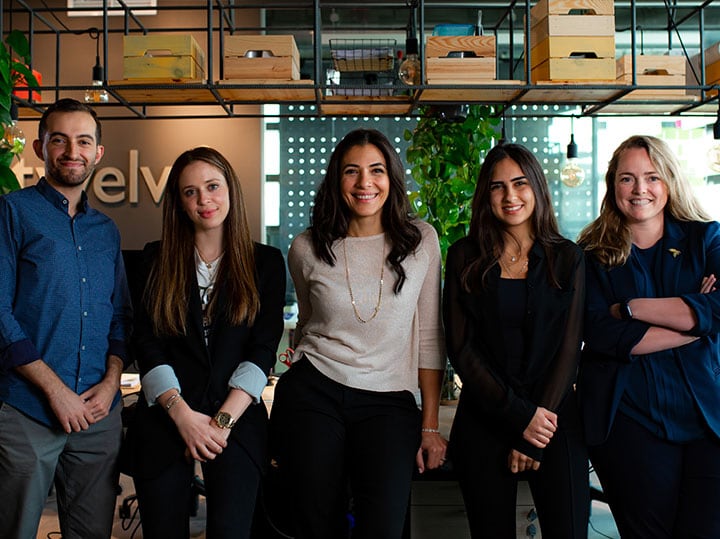
BENTOS:
BENTOS: Ahmad Alameh & Hadi Nassar
Bentos is a super polymer using nanotechnology to hold heavy weight, the innovation is in the cuts applied to the textile allowing it to become rigid when bent and become flexible when contracted. The cut pattern is applied to slits in the textile acting as stoppers when pressed into a particular angle. The resulting material can be used in various applications on the body to support movement, prevent overextension, and bear weight – ideal for athletes, elderly, injured, craftsmen and builders.
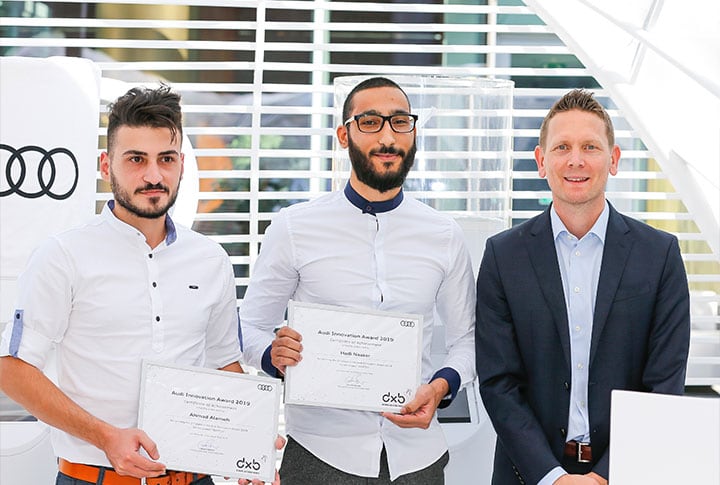
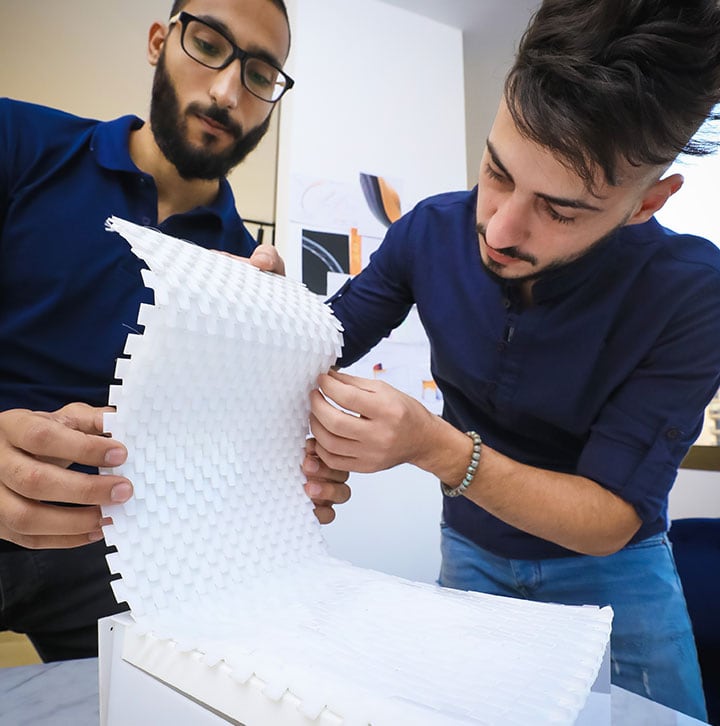
Di_Wrapp:
Di_Wrapp: Omar El-Dimassi
Di_Wrapp is a patented digital skin for the automotive industry. The skin is adhered to the surface of any vehicle body and can be transformed through the use of a mobile app. This interface serves as a billboard for advertising, alerts, general information or for personal customization. Given the number of vehicle surfaces in our urban environment, this opens up a new horizon in communication.

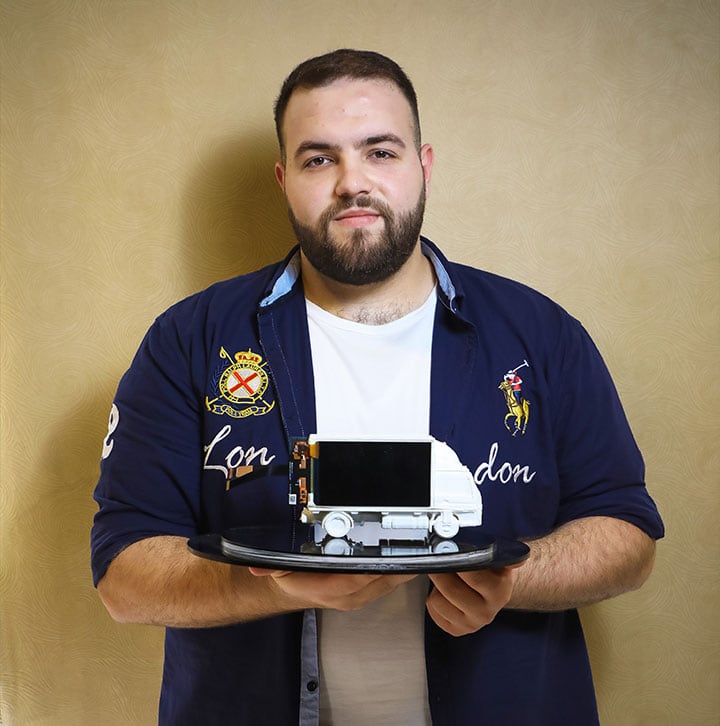
Insect Kids
Insect Kids: Ahmad and Rasha Jarrar
Insect Kids, created by Ahmad Jarrar and Rasha Jarrar, aims to redefine traditional playtime by creating a range of flatpack toys made out of recyclable and biodegradable materials. Studies suggest that children get bored of toys in an average of 36 days, ultimately cluttering homes or loading landfills. The toys redesigned by Insect can be easily disassembled, reducing clutter and ensuring space efficiency. The innovators also provide recycling services for responsible disposal at the end of the product’s lifecycle.






